#14 A Gangster's Paradise(the late '90's)
There are no Trump tariffs on Moscow's biggest export-the mobsters and oligarchs who helped put him in power. Here's how they did it--and why Trump is transforming the US into a Mafia state.
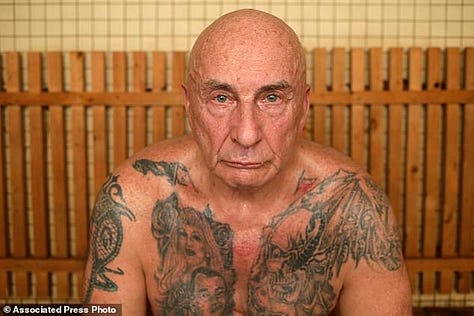


On May 5, Bloomberg’s Jason Leopold reported that the Trump administration was shutting down the “Department of Justice unit that has long been at the center of dismantling transnational organized crime networks, drug cartels, and human trafficking rings.”
No reason was given for eliminating the Organized Crime Drug Enforcement Task Forces, or OCDETF, as the unit was called, but getting rid of it must have delighted President Trump. That’s because it meant the eradication of a potentially powerful foe of the Russian Mafia, money launderers, and international criminal cartels—many of whom had helped put Trump in power and have been funneling money to Republican politicians for decades.
To understand what happened, let’s go back to the mid-Nineties, when Russia became a Mafia state. Fearsome mobsters such as Boris Nayfeld had been populating Brooklyn’s Brighton Beach since the mid-Seventies, but for the most part, they had been confined to extortion, racketeering, and schemes like the Red Daisy fuel tax scam. (See 1984 Trump’s Russian Laundromat ).
In 1991, however, the fall of the Soviet Union was the fulfillment of the Russian Mafia’s greatest dreams. Suddenly, the hermetically sealed world of the Soviet Union was gone for good. Under communism, the Bratva, as the mobsters were known, had been limited to small-time crime extortion rackets and black marketeering. President Boris Yeltsin of the newly-formed Russian Federation had vowed that a market economy would replace communism, but the shift was so abrupt that cash-rich gangsters rushed in to join forces with corrupt apparatchiks—including those in the KGB—and loot newly privatized state-held assets.
So instead of creating a democratic infrastructure and a market economy, Yeltsin allowed a handful of oligarchs to become enormously wealthy. Russia was a poor country, but it had an enormous amount of natural resources—oil and natural gas, iron ore, chromium, copper, aluminum, timber, and more. Massive industries that had been owned by the state were now up for sale—all for mere kopeks on the ruble. It was the birth of a new age of unimaginable greed, in which organized crime was about to become a powerful geopolitical force. And Russia wanted to use that force to destabilize the United States.
In New York, one telltale sign that everything wasn’t kosher could be found in the dazzlingly unlikely rags-to-riches stories about Russian émigrés who arrived penniless in New York but ended up with hundreds of millions of dollars. One of them was Tamir Sapir, né Temur Sepiashvili, an immigrant who came to America with the proverbial $3 in his pocket, started driving a cab, and later emerged as a billionaire(or close to it) owning an apartment in, of all places, Trump Tower.
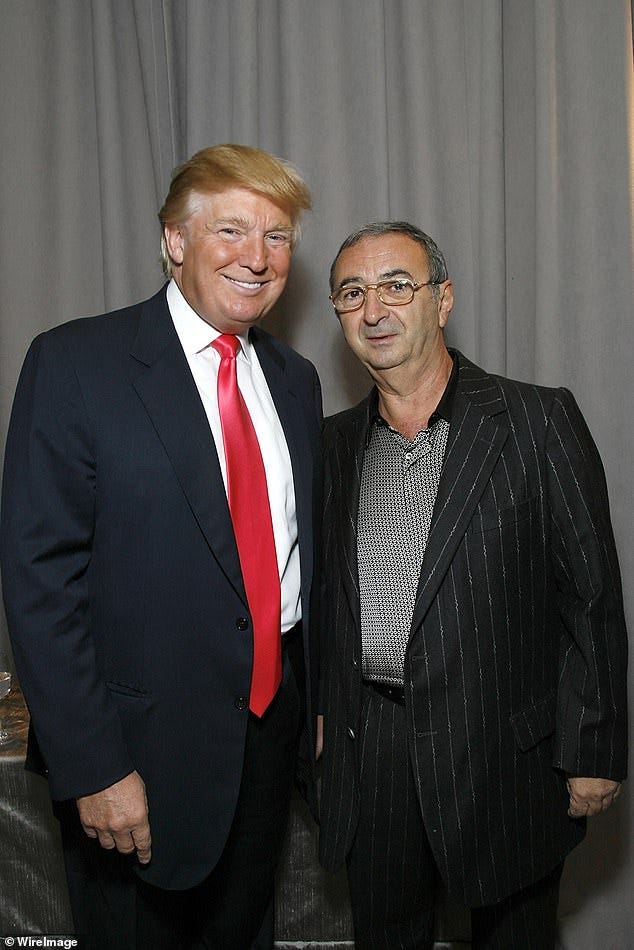
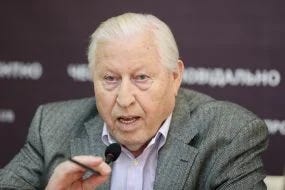
Sapir’s journey was not without intrigue. After his taxi days were over, Sapir partnered with fellow immigrant Semyon “Sam” Kislin to open a small wholesale electronics store called Joy Lud Electronics, whose clients included Soviet diplomats, Politburo members, and KGB agents. As I reported in my Substack post, 1980 Former Soviet Agent: How Trump Was Lured into the KGB’s Web, Sapir and Kislin had sold hundreds of TV sets to Donald Trump back in the Seventies for his first major project, the transformation of the Commodore Hotel, and in so doing had lured Trump into the orbit of Soviet intelligence operatives
For Sapir and Kislin, however, a small electronics store was an unlikely path to great wealth. Their real secret may have been their ties to organized crime through an Uzbek businessman named Mikhail Chernoy, who seeded Kislin’s and Sapir’s London-based holding company, Trans Commodities, through a convoluted maze of offshore companies. Like many oligarchs, Chernoy had gotten his start via immensely profitable and sometimes imaginative barter deals in which he traded iron ore pellets in exchange for Lada cars, coal for food, sugar, and the like.
In the process, Chernoy and his brother Lev allegedly “defrauded the Russian Central Bank of more than $100 million through an elaborate scam involving dozens of fictitious companies,” according to a report by Knute Royce, a Pulitzer Prize-winning reporter, for the Center for Public Integrity. Then they “rapidly gained control of Russia’s aluminum industry and acquired a large stake in processing and distribution of other metals and petroleum products.”
All this was a template of sorts that was used for oil, natural gas, banking, and other formerly state-owned industries that were now in the hands of newly minted oligarchs.
Since he began his second term in January, President Trump has used a template similar to Putin’s in his relationships with American oligarchs such as Elon Musk, Jeff Bezos, Mark Zuckerberg, and other denizens of Silicon Valley.
Meanwhile, the Chernoys had begun working with Semion Kislin’s firm, Trans Commodities, and were allegedly using it for fraud and embezzlement. Knute Royce’s article also cited a 1994 FBI file that characterized Kislin as a “member/associate” of the mob organization headed by Vyacheslav Ivankov, the “godfather of Russian organized crime in the United States.”
A fearsome killer of the old school of Russian mobsters, Ivankov was officially a vor y zakone, literally, a thief-in-law, or, to put it in the terms of American mafia, a “made man.” When he was still in Russia, a fairly typical outing had Ivankov and his gang breaking into the home of a wealthy black marketeer, handcuffing him to the radiator and threatening to pour acid all over him unless he signed over a promissory note for 100,000 rubles. As his reputation for brutality grew, Ivankov became one of the top vory and was selected to help oversee Mafia activities in the United States.
For years, the FBI was on the trail of Ivankov but couldn’t figure out where he lived. He had been spotted frequently at the Trump Taj Mahal in Atlantic City and was widely thought to be based in Brighton Beach, where most of the other Russian mobsters lived. But, as I wrote in House of Trump, House of Putin, “Whenever the FBI was ready to pounce, [Ivankov] vanished. When they finally found him, he wasn’t in Brooklyn at all. Instead, they discovered that the head of the Russian Mafia lived in a luxury condo in Manhattan—at 721 Fifth Avenue, in fact—Trump Tower.”
To a certain extent, Ivankov’s colorful depravities masked what was really happening. Just as Russia had effectively become a gangster state whose political system was governed by organized crime, so the gangsters who emigrated and ran the Russian mob were now poised to infect and infiltrate a vast array of power centers in America.
Over time, thirty Russian crime syndicates began operating in New York, Miami, San Francisco, Los Angeles, and at least a dozen other cities, orchestrating insurance scams, pump and dump stock rip-offs, medical fraud, and complex schemes to launder billions of dollars in flight capital pouring out of Russia.
Now that the spigots were open, Russian money began pouring into the Republican Party. A $1 million check mysteriously made its way to the US Family Network, a slush fund used by House Majority Leader Tom DeLay, after DeLay had accompanied lobbyist Jack Abramoff to Moscow for a meeting with Prime Minister Viktor Chernomyrdin in 1997. Alfa, the multibillion-dollar Russian conglomerate, paid nearly $2 million in lobbying fees to Barbour Griffith & Rogers, the powerful GOP lobbying firm. Several years later, Bob Dole, the 1996 Republican presidential nominee, accepted a $560,000 fee to help Russian billionaire Oleg Deripaska obtain a visa to visit the US.
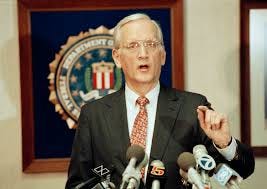
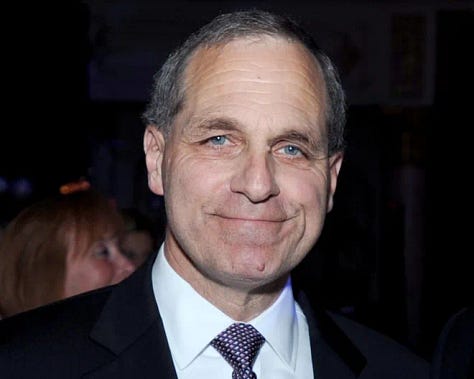
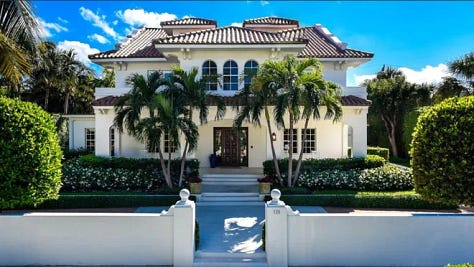
Even William Sessions, the director of the FBI, got in on the action after he left the bureau in 1997 and became a lawyer in the private sector, representing none other than Semion Mogilevich, the boss of the Russian mob who had graced the FBI’s Most Wanted List. Nor was Sessions alone. Louis Freeh, who served as FBI Director until 2001, went on to represent Prevezon Holdings Limited, the Russian-owned company that was allegedly involved in laundering the proceeds of a $230 million Russian tax fraud scheme.
But Trump had begun to provide a home base for the Russians. As I wrote in The New Republic,
Over the past three decades, at least 13 people with known or alleged links to Russian mobsters or oligarchs have owned, lived in, and even run criminal activities out of Trump Tower and other Trump properties. Many used his apartments and casinos to launder untold millions in dirty money. Some ran a worldwide high-stakes gambling ring out of Trump Tower—in a unit directly below one owned by Trump. Others provided Trump with lucrative branding deals that required no investment on his part. Taken together, the flow of money from Russia provided Trump with a crucial infusion of financing that helped rescue his empire from ruin, burnish his image, and launch his career in television and politics.
Consider for a moment the national security implications of the above. The Russian Mafia, as I have written, is an arm of Russian intelligence. And their home away home, a haven for their leaders, has been in a luxury condo building that is the crown jewel of the president of the United States.
Does that not constitute an astounding breach of national security?
Of those Trump associates who were tied to the Russian Mafia, no one was more enigmatic than Felix Sater, a stocky, olive-complexioned, Porsche-driving super salesman right out of Glengarry Glen Ross who, as Managing Director of Bayrock, a real estate development company that moved into Trump Tower in 2002, helped facilitate deals that put the bankruptcy-prone Trump back in business.
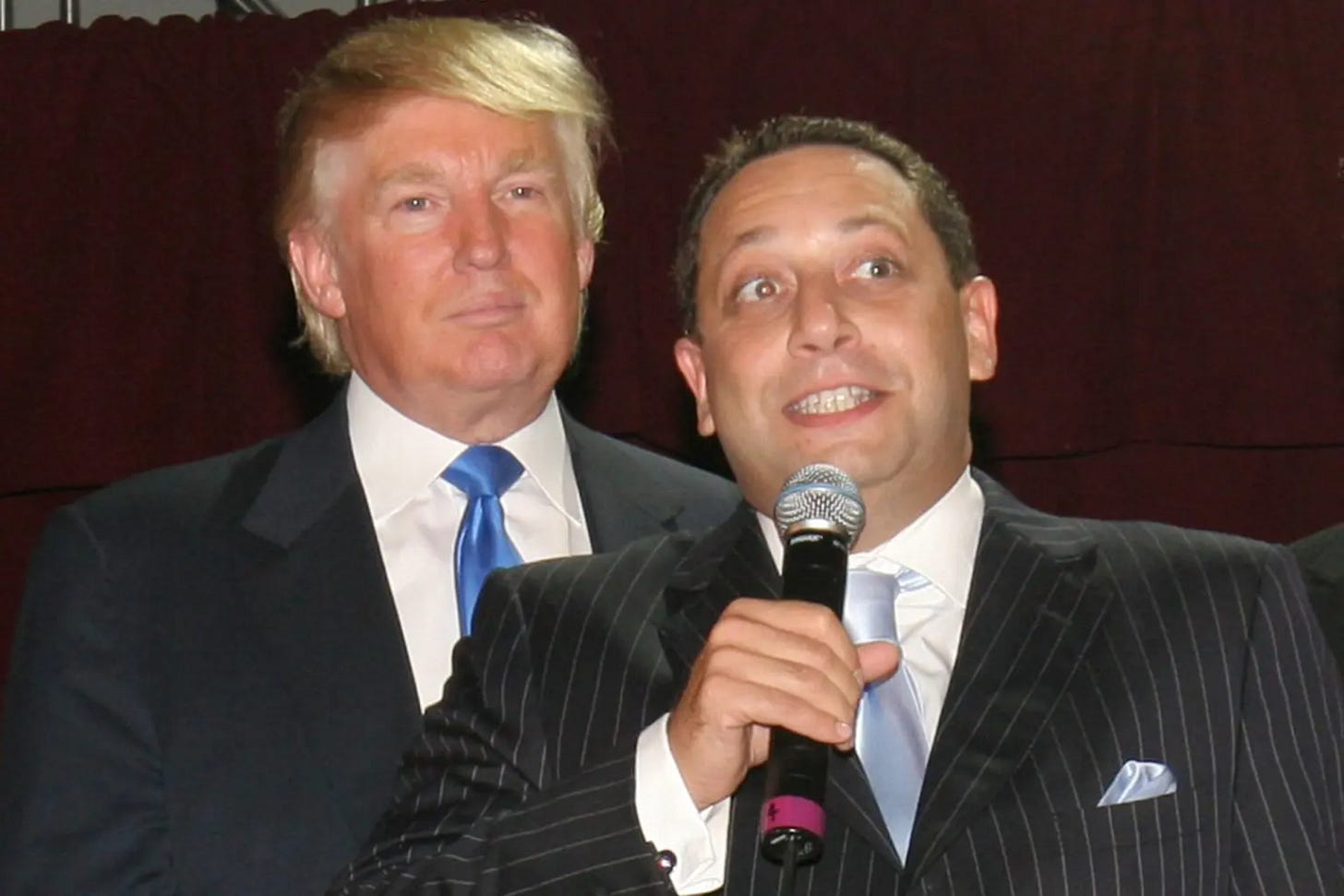
Born in Moscow, Felix had come to the United States with his family, then known as the Sheferovskys, in the early Seventies with the first waves of Soviet emigres in Brighton Beach. There have long been allegations that his father, Mikhail Sheferovsky, had ties to organized crime, including Semion Mogilevich, a charge Sater’s attorney categorically denied. Nevertheless, a certified US Supreme Court petition written by Richard Lerner described Michael Sheferovsky (aka Mikhail Sater) as “a (Semion) Mogilevich crime syndicate boss.”
Felix seemed to be following in his father’s footsteps. After an assault conviction resulting from a drunken brawl, Sater served fifteen months in prison. Then, after he was released, he became involved in a pump-and-dump stock scam.
In 2002, Bayrock, a real estate development company of which Sater was managing director, moved into the 24th floor of Trump Tower, providing Sater with the opportunity to pop upstairs and drop in on Trump with prospective licensing deals for development sites in Moscow, Warsaw, Istanbul, and Kyiv.
Trump was ecstatic. Bayrock put together projects for Trump that included the Trump Soho in NY, Trump International Hotel and Tower in Fort Lauderdale, the Trump Las Olas in Fort Lauderdale, Trump International Hotel and Residences in Phoenix, and many more. For some projects, Trump crowed, he would get a 25 percent stake, plus management fees—without having to invest a dime.
And where did the money come from? After his multiple bankruptcies in Atlantic City, Trump was still so toxic that he left that up to Bayrock. “Bayrock knew the investors,” Trump later testified in one of the many court proceedings that grew out of his new partnership. He added that “they “brought the people up from Moscow to meet with [Trump],” referring to a cozy group of billionaire oligarchs from the former Soviet Union.
As court records explained, Bayrock was “covertly mob-owned and operated,” “backed by oligarchs and money [the oligarchs] stole from the Russian people.”
But that was small potatoes compared to the outcome: Donald Trump was back in business.
Cast of Characters
Mikhail Chernoy
Billionaire oligarch who ran the Trans-World Group with his brother Lev; gained control of Russia’s aluminum industry; and acquired a huge stake in the processing and distribution of other metal and petroleum products. Chernoy also worked with Semion Kislin, who had a long relationship with Trump and who partnered with Tamir Sapir, a financier of Trump SoHo.
Vyaschlav Ivankov
Also known as Yaponchik (“little Japanese”), Ivankov was a hardened vory v zakone who was sent to the US by Semion Mogilevich (below) to shore up the fortunes of the Russian Mafia. The FBI looked all over for Ivankov before they realized that he was a regular at Trump’s Taj Mahal and had a condo in Trump Tower on Fifth Avenue.
Semion “Sam” Kislin
Ukrainian émigré and co-owner of Joy-Lud Electronics, a Manhattan store frequented by Soviet diplomats and KGB officers. Around 1980, he sold Trump around 200 TVs for the Commodore Hotel. Ex-KGB officer Yuri Shvets described Kislin as a spotter agent—someone who identified potential KGB assets. The FBI later linked him to a Russian mobster, though Kislin denies any mob ties.
Semion Mogilevich.
The so-called “Brainy Don” of the Russian Mafia, Mogilevich, is a billionaire best known for his money laundering wizardry. He was on the FBI’s Top 10 Most Wanted List and put former FBI Director William Sessions on his payroll in the mid-2000s.
Tamir Sapir
Georgian-born immigrant and former Joy-Lud partner. Like Kislin, he rose from poverty to a billionaire and was later involved in the Trump SoHo project. Allegedly tied to Russian organized crime, though he denied any such links. He lived in Trump Tower and died in 2014.
Felix Sater
Bayrock’s international man of mystery, Sater was born in the Soviet Union in 1966. As managing director of Bayrock Group, he partnered with Trump and made various stabs at developing Trump Tower Moscow. Cooperated with the government after pleading guilty to racketeering for his role in a $40 million stock fraud scheme in 1998. His father was said to be a lieutenant in Mogilevich’s organization and did business with the Italian Mafia in New York. A childhood friend of former Trump lawyer Michael Cohen, Sater served as a government asset who helped the US track terrorists and mobsters. He was also alleged to be working with Mogilevich. Sater accompanied Ivanka Trump and Donald Jr. on a 2006 trip to Russia during which he said he arranged for Ivanka to spin around in Putin’s chair in the Kremlin.
If you have tips, leads, or insights, please reach out—I am always looking for new information. And don’t forget to comment and share your thoughts!
For the complete story on how Trump became a Russian asset, buy House of Trump, House of Putin and/or American Kompromat. And don’t miss my latest book, Den of Spies!
House of Trump, House of Putin
The Untold Story of Donald Trump and the Russian Mafia
American Kompromat
How the KGB Cultivated Donald Trump, and Related Tales of Sex, Greed, Power, and Treachery
Den of Spies
Reagan, Carter, and the Secret History of the Treason That Stole the White House




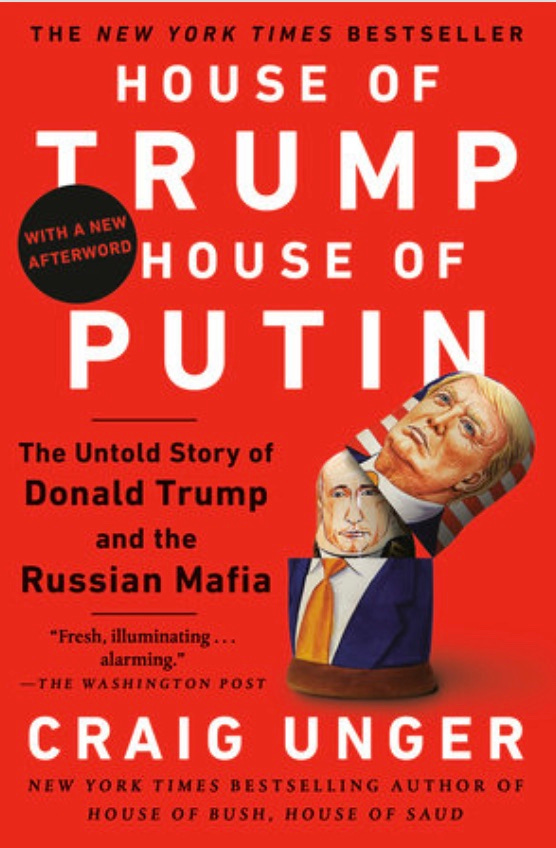
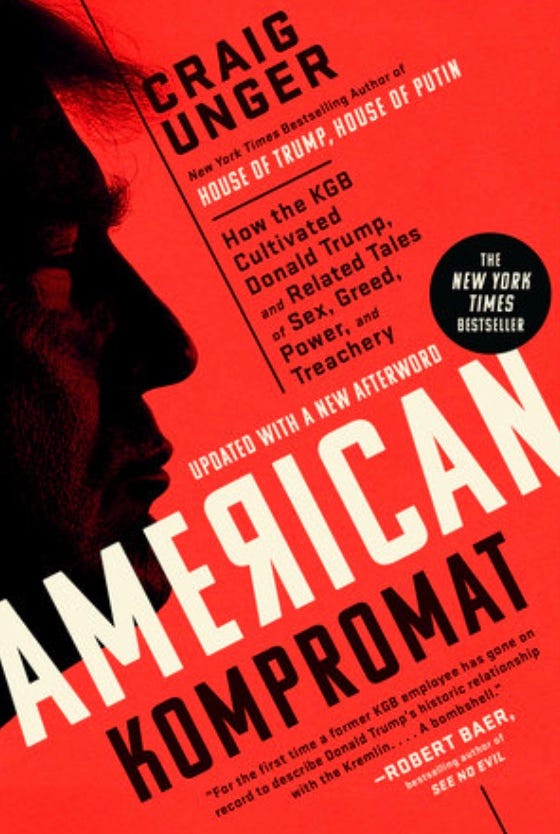

Thank you for your superbly researched work. As a Brit, I'm saddened to see the "Land of the free" turn into Gangsterland. What will it take for Trump and his acolytes to be held accountable?
Thanks so much Craig, I have read both books 📚 An I been following your work for a decade, I have no doubt that the criminal underworld has taken over our country, along with the billionaire Robber Barons,an the Christian extremist, who are counting on the racist uneducated Americans to do their dirty deeds..